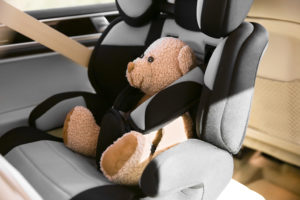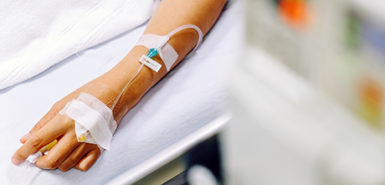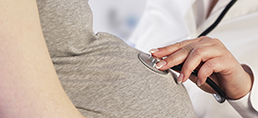
With sweater weather upon us, fall activities are getting into full swing.
That means plenty of fun activities with school, sports and outdoors. It’s a perfect time to keep safety top of mind while out and about with family.
When it involves small children—babies especially—there’s plenty to scrutinize when it comes to safety.
Here’s a look at some critical areas.
Car seats
Michigan law requires your baby to be in a car seat. The Child Passenger Safety Law says that children younger than age 4 should ride in a car seat in the rear seat—if the vehicle has a rear seat. If all available rear seats are occupied by children under 4, then a child under 4 may ride in a car seat in the front seat.
A child in a rear-facing car seat may only ride in the front seat if the airbag is turned off.
When you take your baby home from any Spectrum Health hospital, you will need to have a car seat.
There are many car seats on the market. One thing I always appreciated hearing our local car seat technicians say is that all car seats are tested. If you choose a more expensive car seat, you are choosing cup holders, fancy prints or extras—but all car seats are tested the same.
Safe Sleep
A safe sleep environment and safe sleep habits are essential to good health. These habits apply not just to your little one but to you and other family members, too. I’ve written about this topic previously—and it’s definitely worth the read.
Falls and hazards
We all think of home as our safe space, but there are plenty of dangers lurking in kitchen cabinets, garages, attics and bathrooms.
In fact, more than 1 in 3 accidental injury deaths happen at home.
Once babies become mobile, they can get around fast. You need to be ahead of them on this.
The soundest advice I’ve heard on this: Always stay well ahead of your child’s next developmental accomplishment.
For example, you don’t need a gate at the stairs when you first come home from the hospital—your newborn won’t be walking, crawling or rolling for a while. But before baby learns to roll, you will need to install a gate on the stairs. Once they learn to roll over, they can roll across the room.
Poisons
This can be a big one.
One thing I always teach parents: As baby grows, watch out for “lookalike” dangers. An example of this is parmesan cheese and comet. One is great on spaghetti, the other is a cleaning product. If you have a toddler, they can’t reason that parmesan cheese wouldn’t be kept with the cleaning supplies.
So look around your home as if you can’t read. Notice what you need to move out of reach. Notice what containers and contents might look like to a child.
Don’t overlook plants—those can be poisonous, too.
I didn’t think about this until a few years ago when my cousin told me she had to call poison control about some plants that her cats ate. I thought, if cats can’t eat it, it can’t be good for a child.
Keep the poison control phone number handy. If your child consumes a dangerous plant, a chemical or something suspicious, take a picture of the item. This can be a huge value to poison control specialists.
Drowning
When we talk about drowning, you might typically think of summertime and swimming pools. But in reality, drowning dangers also apply to a bathtub, a large bucket or even a sink.
The Centers for Disease Control and Prevention tells us that drowning is the leading cause of death in children ages 1-4, outside of birth defects. On average, three children die each day from drowning.
Some things to consider for swimming safety, indoors or outdoors:
• If you have a pool, fence it off. Make sure it’s properly winterized and protected from curious explorers.
• Make sure you’re watching your children. In large groups, children have drowned because parents or caregivers thought the other parents or caregivers were watching.
• Make sure your child is wearing a life jacket.
• Consider a swim class. My grandsons went to a class that didn’t teach swimming strokes, but taught how to float if you fell in the water in any season. Even the 2-year-old, with his winter gear on, could turn over and float at the end of these classes.
Training and prevention
Other important ways to prepare for your baby:
• Look around your house for things that need to be addressed—cords on window blinds, cleaning products, places that need gates, etc. Keep dangerous things out of reach of children.
• Take a child/infant choking/CPR/first aid class. At Spectrum Health Gerber Memorial, this is built into our classes on preparation for childbirth.
• Make sure the numbers to poison control and your pediatrician are in your phone for fast, easy access.
• Make sure your smoke detectors and carbon monoxide detectors are working properly.
 /a>
/a>
 /a>
/a>
 /a>
/a>
Great article! I especially enjoyed how you touched on a number of hazards…and then linked to more “in-depth” sources. And I liked the real life examples of your grand children and rolling babies. Thank you.